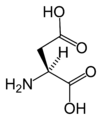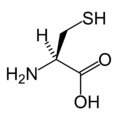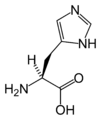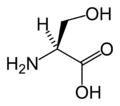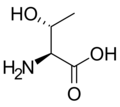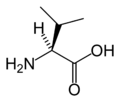
There are four ways to guestimate your terminal length:
By looking at the hemline
By using a picture and paint
By graph
By calculating
Disclaimer: All of these methods are absolute guestimates.
There are many issues with each methods, such as layers interfering, that a lot of hairs have a shorter terminal length than others, and the fact that you can't know any of these numbers with 100% accuracy.
By looking at the hemline
True terminal length means that your hair simply can't grow any longer. Here, everyone should say "Well, duh, Igor".
But looking into what that means physically, it means that the hair is at the resting phase right before the hair sheds. This also means that the hair is only at this phase for a matter of weeks. Knowing this, we also know that this means that true terminal will have extreme taper, because so few hairs are at this stage. In fact, some of the people who have reached true, actual terminal on the hair forums have often described their ends as "just a few, trailing hairs" or something similar.
Therefore, if you can maintain anything that even vaguely resemble a hemline of a desired shape, you are not at terminal length.
By using a picture and paint
This method is pretty simple: You make a plain English braid and take a picture of it. Then put it through any program where you can paint on it.
You follow the taper of the braid and put in two straight lines following the outline of the braid. At one point the lines will intersect and that is the picture and paint-based guestimate for where your braid will end at your terminal length.
By graph
You will probably need help for this method.
Put your hair in a ponytail and compress it pretty well. Keep putting more elastics in along the length, like making the bubble ponytail, except without making volume.
Measure the distance between each elastic and put those entries in on the X-axis of a graph.
Measure the circumference of your hair at each elastic and put those entries in on the Y-axis of a graph.
The data should give you something that looks like a sloping curve, that you can try to draw up looking a little straighter between data points. Where the curve hits the X-axis for Y=0, should be the terminal length and X will tell you how long that is guesstimated to.
By calculating
If you know a few things about your hair and hair growth, you can calculate your guesstimated terminal length.
The numbers you need to know are:
- How fast your hair grows
- How much you shed
- How many hairs you have on your head
Notes:
- How fast your hair grows is fairly easy to measure, and most people interested in growing their hair longer will know this. This has a fairly high accuracy.
- How much you shed can be counted by picking up your shed hairs and counting them. Of course the chance of getting your hands on all of them are low, but you can get a guestimate if you have some patience (Or are bored) This has a medium accuracy.
- How many hairs you have on your head is just impossible to know, unless you are the most patient person on the planet. The numbers that gets repeated seems to be the same no matter the source though. Blonde hair has 150,000 hairs on the scalp, brown hair has 110,000, black haired people come in at 100,000 and finally those with red hair only 90,000. For those inbetween-colours like mine, I guess you just have to guestimate. This has a low accuracy, especially if you start playing around with the difference just a few thousand hairs make.
First number you need to have, is how long it takes your scalp to replace all actively growing hairs.
So you take your guestimated number of hairs on your scalp and divide it by your shedding rate. If you have counted your shed hairs on a daily basis, go x 365, if you have any other counts, use that.
Like this:
(Guestimated number of hairs on your scalp) / (Daily shedding rate x 365) = The number of years it will take your scalp to replace all actively growing hairs
Second number you need to know is how fast your hair grows in a year.
You either take your annual, or the monthly x 12. Depends on which number is trim free, because of course you need to know this without trims.
Like this:
((Monthly growth rate) x 12) + any seasonal variation if you have that = The annual total hair growth
Now take these two numbers and multiply them.
Like this:
(The number of years it will take your scalp to replace all actively growing hairs) x (The annual total hair growth) = Your guestimated terminal length
This might be confusing to some, so here are my own numbers if it makes it easier to follow
(Guestimated number of hairs on my scalp) / (Daily shedding rate x 365) = The number of years it will take my scalp to replace all actively growing hairs
I'm going to go with the blonde number for this, so 150,000.
Years ago I actually tried picking up and counting my shed hairs for a full week (Yes, it was exactly as boring as it sounds. 2/10, would not recommend) and I think I landed at 60-something hairs per day. It's many years ago, so my memory at the numbers might fail me. Let's put it as an even 70 just to compensate for the hairs I didn't find.
150,000 / (70 x 365) = 150,000 / 25,550 = 5,8 years for my scalp to replace all actively growing hairs
((Monthly growth rate) x 12) + any seasonal variation = The annual total hair growth
I get a monthly 1,5 cm, plus 2-3 months during the summer where I get 2,0 cm.
(1,5 x 12) + (2 x 0,5) = 18 + 1 = 19 cm of annual hair growth
(The number of years it will take your scalp to replace all actively growing hairs) x (The annual total hair growth) = Your guestimated terminal length
Now I multiply those numbers
(The number of years it will take my scalp to replace all actively growing hairs) x (My annual total hair growth) = My guestimated terminal length
5,8 x 19 = 110, 2 cm
Even if we say that this is the maximum length for each individual hair, this is obviously not accurate to reality. If you play around with these numbers, you can see how huge a difference it makes to increase growth rate, reduce shedding rate or use a "between" count for the hair colours.
But hey, all these methods are guestimates :)
















